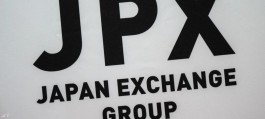China's central bank has bolstered support for the under-pressure yuan by raising the daily reference rate for the managed currency by the most since January.
The People’s Bank of China adjusted its fixing rate by 0.1% as speculators remained on high alert after the yuan tumbled to its weakest since November on Friday. The currency rose 0.2% in offshore trade in response to the reference rate and was little changed domestically.
Difficult task
The People’s Bank of China faces a tough task of keeping its currency stable while trying to maintain a supportive monetary policy for a faltering economy and continue to provide a cushion for capital outflows. While a weaker yuan could help the export side of the economy, a steep fall risks a massive surge in capital outflows as investor sentiment toward China slides into negative territory.
The peg reaffirmed that Chinese policymakers are sticking to the same economic strategy to stabilize the yuan, said Christopher Wong, a currency analyst at Oversea-Chinese Banking in Singapore. That will help ease pressure on Asian foreign currencies excluding Japan, including the Korean won and Thai baht, which may be more sensitive to the yuan’s direction, he said.
Asian currencies, which are usually heavily influenced by investor sentiment in China, advanced after the peg was revised higher, with the Australian dollar rising and the South Korean won extending gains. The People’s Bank of China’s reference rate sets the yuan’s internal range at 2% up or down.
Yuan depreciation
As a source of stability in the global foreign exchange market and a benchmark for regional peers, any signal from officials that they are open to letting the yuan depreciate could send ripples across a range of currencies. The yuan fell by the most in more than two months on Friday as speculators bet that the day’s fixing rate signaled that officials were open to such a depreciation.
Before that session, the yuan had been largely steady for about two months despite pressure from a faltering economic recovery and weak sentiment toward Chinese assets. Now, the rebound in the U.S. dollar and the decline in the Japanese yen are also weighing on the yuan, making the People’s Bank of China’s support even more urgent.
“We believe that while short-term economic factors are supporting a slightly weaker yuan, any pullback will be gradual and manageable,” ING analysts Chris Turner and Lin Song wrote in a note to clients. “The People’s Bank of China has managed to partially control the yuan after its rapid depreciation.”
While officials are showing support for the currency, the wide gap between U.S. and Chinese interest rates and seasonal factors could remain large, said Xiaojia Qi, head of research at Credit Agricole CIB Hong Branch. “The PBOC does not encourage a large depreciation of the yuan,” she said. “A gradual return to more flexible exchange rate is likely, as the currency could see some pressure going forward.”




































